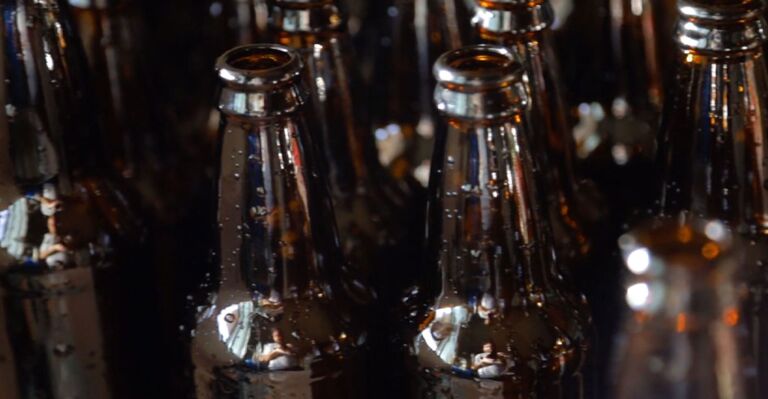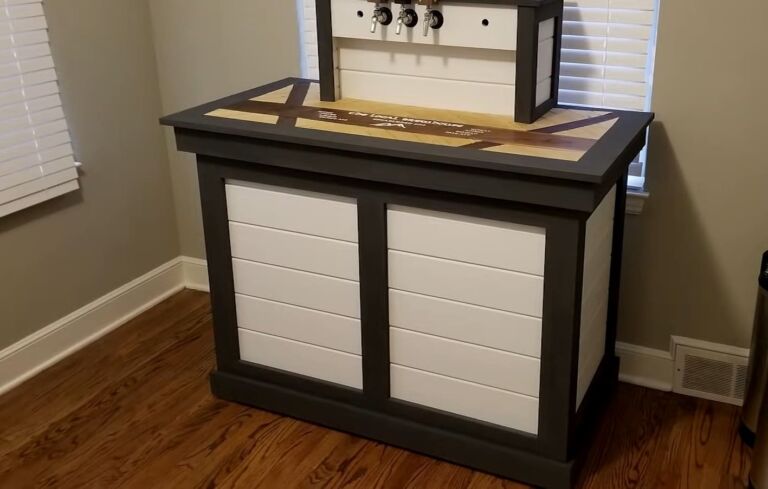Get the Homebrew: Easy Steps to Keg It
It’s a good time to be a beer lover. With the explosion of craft breweries across North America, there are more beers on tap and in stores than ever before. The problem is that not everyone can afford these pricey brews every day, which is where homebrewing comes in handy.
Homebrewing has been around for centuries if you count back to the days when people would just put leftover fermented fruit into water or honey or grains to make their own wine or ale at home. But today, it’s easier than ever with kits available online and lots of great information out there about how-to recipes! Here are steps to kegging homebrew, so you don’t miss out on all the fun!
5 Quick Steps to Keg Beer
- Step 1: Sanitize or clean your keg.
- Step 2: Assemble and leak test the gas side of the keg system.
- Step 3: Transfer beer to sanitized keg.
- Step 4: After 2-3 days, test the carbonation of the beer.
- Step 5: Enjoy your beer!
How to Keg Beer: Step-by-Step Guide
Step One: Sanitize or clean your keg.
Repeat step one until it is completely sanitized and free of any residue from the cleaning agents. If you are worried about getting everything clean, use a second bucket for rinsing in-between steps. It’s also important that you make sure you rinse the keg well with clean water after each step, which will help avoid any bacterial growth in the beer.

Step Two: Attach a good length of hose to your tap and attach it to one side of your keg’s ball valve assembly.
Step Three: Fill up the other end of the hose from the spout on the keg with your beer.
Step Four: Add a clean and sanitized airlock to seal up the hole in your lid. If you don’t have a spare one, use a band or some foil wrapped around it tightly so no air can get through.
Repeat step two until you have filled up all of your kegs.
Step Five: Keep the beer at a fairly cool temperature for now, as fermentation will cause your brew to heat up quickly and could result in exploding bottles!
Repeat step five until you have put all of your homebrew into the keg.
When it comes time to carbonate or force-carbonate, refer to your specific homebrewing instructions for the appropriate time and temperature.
Spout – This is the tap handle on your keg.
Ball Valve Assembly – This allows you to control how much beer comes out of the spigot.
Hose & Tap – You attach one end of this hose to your ball valve assembly and another end into a bucket or sink with some ice in it to chill your beer down.
Airlock – This is a small device that fits into the lid of your keg and allows carbon dioxide to escape without letting oxygen in. You can use foil or plastic wrap around it if you don’t have an airlock available for sealing up the hole in the top of your keg during fermentation.
Homebrew – This term is used as a catchall for beer that has been brewed at home.
Ferment – Once your homebrew has finished fermenting, it’s ready to be carbonated and consumed!
Step Six: Carbonate or force-carbonate your kegged homebrew by adding some priming sugar (refer to your homebrewing instructions for details).
Step Seven: Keep the keg chilled and serve it just like you need any other commercial beer.
Repeat step seven until all of your homebrew has been carbonated in this way.
Parts & Components – Homebrew is made up of malt, hops, yeast, water, or some combination of these ingredients.
Ferment – The yeast eats your homebrew’s sugars and converts them to alcohol, which is what you drink when you enjoy a beer!
Priming Sugar – This can be bought at most homebrew stores or online suppliers for brewers. It’s basically another type of sugar that ferments alongside your brew to give its beer flavor and carbonation.
When it comes time to decant your homebrew, make sure you do so very carefully as not to disturb any of the sediment at the bottom of your keg that could affect its taste or consistency!
Step Eight: Enjoy a cold one after all of your hard work! Repeat step eight until you’ve had as much homebrew as you want!
Parts & Components – To make a keg of beer, you need malt extract, yeast, hops, and water.
Yeast – This is the living organism that eats sugars from your brew in order to turn them into alcohol for drinking. It also gives off carbon dioxide, which makes bubbles in your beer.
Hops – This ingredient adds flavor to beer and is responsible for most of its bitterness. It also helps preserve the brew over time.
Malt Extract – A powdered form of malted barley that’s made by extracting sugars from it using water, malt extract makes up a large part of homebrew since you’re boiling down the sugary liquid into a syrup that’s easier to mix and transport.
Ferment – This is pretty much what it sounds like: the process of yeast eating sugars in your brew, converting them to alcohol, and dumping off carbon dioxide as a byproduct.

Decant – To decant homebrew means to separate out any sediment or solids at the bottom of your keg by carefully pouring out your brew.
Sediment – Solid material that sinks to the bottom of a container during fermentation or storage.
Keg – This cylindrical container is made up mostly of stainless steel and contains either plastic or metal handles on each side for carrying convenience! There’s a tap at one end, and at the other, there’s an opening that allows you to attach hoses, taps, or spouts for dispensing.
Carbonation – This is what happens when carbon dioxide bubbles are added to your homebrew after it’s been fermented! It gives beer its flavor and provides some of those characteristic “beer head” bubbles you see when you pour it into a glass.
Step Nine: Sanitize your keg with unscented bleach or an approved homebrewing cleaner before adding the priming sugar to carbonate your beer!
Disassembly & Cleaning
Once you’re finished enjoying your homebrew, it’s time to take the whole thing apart so you can clean out any sediment or residue. It may be necessary to soak some parts of your keg in hot water for this process if they are too difficult to get into with a sponge or brush!
Decant – You want to carefully separate the sediment at the bottom of your keg while it’s still in liquid form. Make sure you don’t disturb any of that gunk, or else you will affect the taste and consistency!
Rinse – Now clean out all components with cold water, including silverware for serving homebrew if necessary. Anything that touches your brew should be well-cleaned afterward!
Parts & Components – A keg is made of stainless steel, and either plastic or metal handles make it easy to carry. It also contains a valve where you can dispense homebrew from its taps, which are the small spouts that stick out on one side.
Dispense – This means to use the valves on your keg to release homebrew into glasses.
Sediment – This is all of that gunk at the bottom of a container where yeast, hops, malt extract, or water settled during fermentation and storage. Make sure you don’t disturb it when decanting!
Once everything’s clean again, go ahead and reassemble your keg!
Reassembling a keg means putting it back together piece by piece. It’s usually just as easy as taking everything apart in the first place, but on some occasions, you might need to soak parts of it in hot water before doing so for easier disassembly.
Sanitation & Racking
Sanitation is a good way to prevent infections in your homebrew, so clean it just as carefully and thoroughly after you’re done enjoying yourself!
Racking – This means transferring brewed wort into another container. You can do this by siphoning or using a tube that’s been fitted with valves at both ends. Make sure the end you’re siphoning into is higher than the end that’s still in contact with yeast sediment, which should be at the very bottom of your keg!
Additives – Many additives can help improve or alter your homebrew. Saccharin and dextrose will give it a sweeter taste, while lactose will make it creamier. Even a little bit of salt can add in some flavor!
Brew – This word means to make beer, so that’s what you’re going to do when you start this process from scratch at home!
Step Ten: Now it’s time for fermentation, which is when yeast eats sugars and converts them into alcohol with the help of carbon dioxide as a byproduct!
Fermentation – This is the process where yeast eats sugars and converts them into alcohol with the help of carbon dioxide as a byproduct.
Step Eleven: Now it’s time for decanting which means to separate sediment or solids at the bottom of your keg carefully while it’s still in liquid form!
Step Twelve: Clean out all components with cold water, including silverware for serving homebrew if necessary. How to Keg Homebrew
Carbonation & Serving
Carbonation is what gives homebrew its fizz, so it’s essential to let the yeast do its job in order for you to enjoy your finished product!
Carbonate – This means adding carbon dioxide to fermented wort through a process known as force or forced carbonation. You can use plain old CO₂ that’s been pumped into your keg.
Serve – This is the process of dispensing homebrew from its taps (small spouts that stick out on one side) with a kegerator or by attaching it to dispense valves!
Step Thirteen: Decant carefully while in liquid form and then rinse everything thoroughly, including silverware for serving homebrew if necessary.
Step Fourteen: Reassemble your keg, and you’ll be ready to go in no time!
Step Fifteen: Additives can help improve or alter your homebrew.
Step Sixteen: Carbonation is what gives homebrew its fizz, so it’s important to let the yeast do its job in order for you to enjoy your finished product!
Step Seventeen: Clean out all components with cold water, including silverware for serving homebrew if necessary.
Step Eighteen: Now it’s time for fermentation, which is when yeast eats sugars and converts them into alcohol with the help of carbon dioxide as a byproduct!
Step Nineteen: Once everything’s clean again, go ahead and reassemble your keg!
FAQ
When should I keg my homebrew?
Try kegging homebrew after fermentation and before carbonation. Then, use this article to keg your home bar.
How long does homebrew last in a keg?
Three weeks or so.
How long does homebrew last in a bottle?
About two months.
How do you carbonate homebrew in a keg?
Force carbonation!
How do you force carbonate homebrew?
Use a CO₂ tank and dispense valves. Here’s how to carbonate homebrew with forced carbonation:
- Place the keg in a refrigerator for about 36 hours after racking.
- Hook up gas lines using Teflon tape, and never forget to check for leaks before turning the CO₂ valve on.
- Set regulator to 25-30 PSI and pre-chill your homebrew keg with ice.
To Sum Up
In conclusion, kegging your own beer at home can be a fun and rewarding experience for any beer enthusiast. With the easy steps outlined in this guide, you can get started with homebrew kegging in no time. Remember to always prioritize cleanliness and safety, and don’t be afraid to experiment with different recipes and techniques. Cheers to your homebrewed beer!





